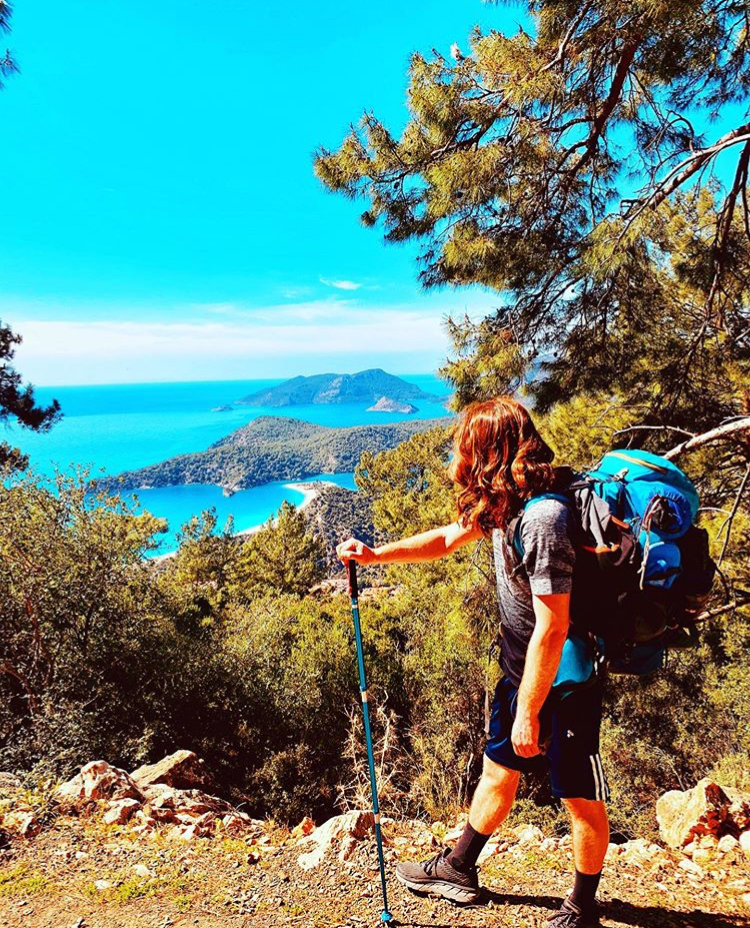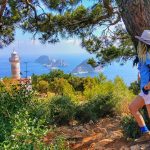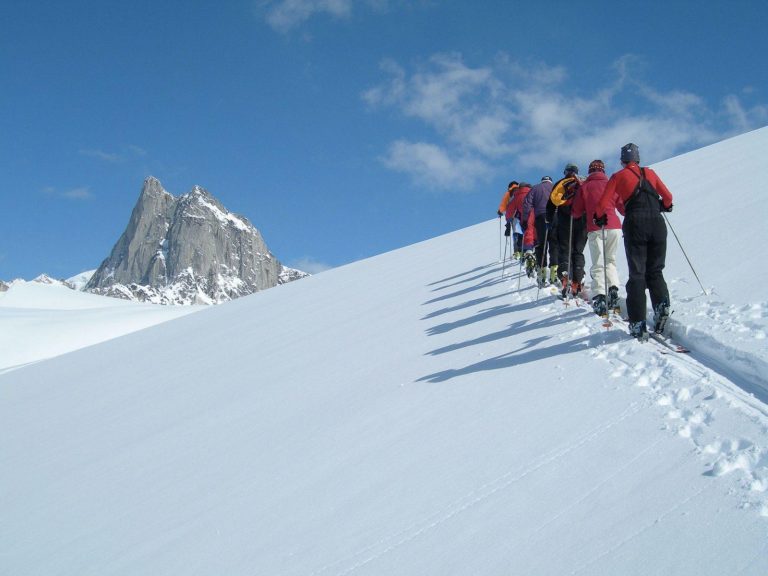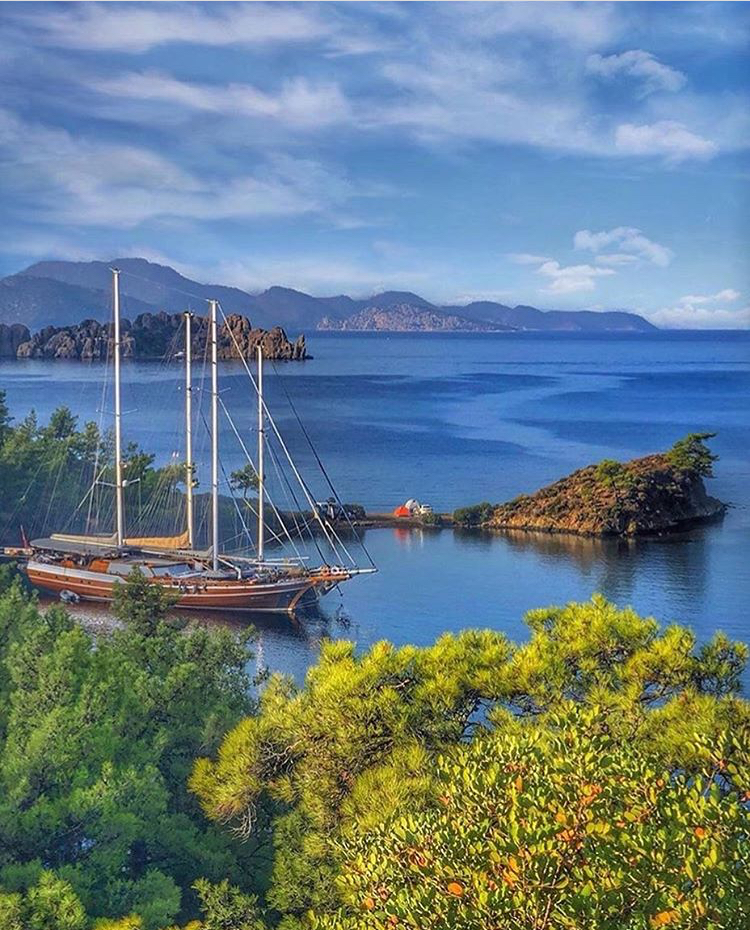Main Info
Walking the St Paul’s Trail
The south coast of Turkey is lapped by the Mediterranean, and we will walk alongside this sea via coastal paths from Antalya, almost to the point where the Mediterranean meets the Aegean. Walking the St Paul’s Trail.
Parallel to the Mediterranean lie the Taurus Mountains, which give us many canyons to explore, following ancient routes through the wild countryside.
Walks and swimming follow each other as we proceed along our journey.
For more than 3000 years successive civilizations have left their mark on this country, and we will visit substantial ancient remains throughout this voyage.
We will take you by surprise with the mythical, yet also real, Chimaera.
We will stay by the sea, or in villages in the mountains, sometimes in people’s homes, in the hope that this will lead you to a slightly better understanding of this mysterious region of Turkey. Walking the St Paul’s Trail.
The program has been carefully planned to allow you, in only two weeks, to experience the mountains and the seaside, to walk and relax, to encounter the past, and thus better understand the present.
A Short History of SELGE.
During the Hellenistic period, (which means from the departure of Alexander the Great in 333 BC, his victories over the Persians, right up until the start of the Roman Empire which followed his from around 150 BC onwards, when Greece became a Roman colony) the Greek name of this town was ZERK.
Following the victory of the Romans over the Greek Empire, the town took the name of SELGE. The name stayed the same throughout the time of the Roman Empire (from 150 BC to 330 AD when Byzantium replaced Rome), throughout the Byzantine era (from 330, the date when Emperor Constantine not only decided that Byzantium should be the ‘New Rome’ but also chose monotheism (Christianity) to replace the polytheism of the Romans, until 1453 when the Ottoman Turks defeated the remaining Byzantines by conquering Constantinople). The name continued to be used during the Ottoman Empire (from 1453 when Constantinople was taken and became known as Istanbul, until 1923 when the Ottoman Empire officially ended and the modern Republic of Turkey was created by Kemal ATATÜRK).
Since 1923 the village, ruined by earthquakes and severely disadvantaged by its physical isolation, has become a lost village. It has an official Turkish name of « Altinkaya ». Just under 1000 people lived here in 2010, with many people having left for the bright lights of the big cities, and a few having gone elsewhere due to the ecological damage being experienced in the countryside and the mountains. Lacking in services, without even a shop, isolated, with no clear central point, it would seem as if the village has given up. Teachers are not at all keen to come to live and teach here (in 2010 there were 2 for around 50 school children) and they refuse to stay for more than one year.
However, somehow the village limps along and is still known as SELGE a name it has had for over 2,100 years !
We leave on foot and walk towards BOSBURUN mountain.
This first walk will be five hours and overall we will go up (in other words we will have a gain in elevation of) 600 metres. We will walk for 3h1/2 before taking a break for a picnic lunch; followed by a short siesta and then another 1h1/2 walking.
Our start takes us past the vestiges of the Temple of Zeus. Then we reach our path which is millenia old, complete with traces of the Romans, and goes slowly up towards the West surrounded by rocks. After about an hour we will come to a pine forest from which there is an excellent view. Behind us to the South we see the Mediterranean ; and everywhere surrounding SELGE are heavily wooded valleys.
We continue along our delightful route, rising slowly up the west flank of the hill, the sun at our backs. We reach the top of a hill where there is an abandoned shepherd’s hut. Time to think about the causes of this abandonment of the countryside and the mountains….
Again we carry on for another half hour’s easy climb in the shade of the pines, then we cross a flat space on the side of the hill towards the whitish mass of BOSBORUN in the North. We have now finished going up on this walk having gained 600m in elevation.
On arrival at the summit plateau we will have a superb view of BOSBORUN, imposing yet arid, and of the verdant valleys which surround the mountain.
We are now walking across a carpet of wild thyme and oregano: you should pick some to take home for herbal drinks and to flavour stews in the winter! You can look at photos of your holiday in Turkey whilst digesting the flavour !
And speaking of stews, it is now time for our picnic. We will go down across a meadow to a natural spring, in the shade of pines and wild fruit trees (apples, cherries, nuts) no doubt planted by an ancient shepherd and eat gazing at the face of Bosborun, so clear you feel you can touch it.
As we are concermed about your health, and also subscribe to the tenets of Responsible Tourism, we have replaced old favourites such as chocolate bars and cakes, purveyors of bad fats and instant sugar hits, and the root cause of many illnesses, with simple fruits. Fresh fruit to end the meal. And dried fruits for snacks during our walks. Turkey is a country of excellent fruits, but it grows neither cocoa beans nor sugar cane ! Thus we are supporting the local economy and at the same time preserving your health.
And you can eat heartily at breakfast, at our picnic lunches and at dinner in the evening, knowing that you are improving your health not only through the exercise of walking, but also by the very foods that you are eating.
A short siesta will provide the perfect conclusion to our picnic in this enchanting place.
After our siesta we continue to walk through the undergrowth to the South, the bottom of the valley, and we get closer to Bosburun, then we gradually descend its southern reaches through a valley where herbs grow surrounded by trees. It has taken us one and a half hours to reach this meadow which has a magical name: «Altinçukur» in Turkish which means «The Golden Bath». We are now at 1550m of altitude.
Here there is no sound, nothing to distract your eyes and ears.
Our minibus will be waiting at Altncukur for the ½ h drive down to our lodge in Kopru. Dînner and stay the night next to the river.
| Included |
|
| Excluded |
|
Itinerary
You will be met at the airport. According to the time of your arrival, there will be a chance to go to the bank to change money. Transfer to hotel. Visit to old Antalya around the harbour. You pay for dinner at the restaurant of your choice.
If necessary we will go to the bank and visit old Antalya, if there wasn’t time to do so on the previous day. Then leave ANTALYA to visit the Greco-Roman site of ASPENDOS which is 50km to the east.
The theatre at ASPENDOS was built by the Romans on top of Hittite remains (dated to 800 BC). Construction was carried out on the orders of the Emperor Marcus Aurelius (161 – 180 AD).
A historic battle between the Persians (modern day Iran) and the Greeks took place here in 486 BC, and resulted in a fleeting victory for the Greeks.
Then Kémal ATATÜRK visited the imposing ruins of ASPENDOS around 1930 and decided they should be restored, and used once again for theatrical and sporting purposes. This is only one of many examples of the spirit and genius of Atatürk. Now each year in June and July an international festival of opera and ballet is held here.
After the visit to ASPENDOS and lunch, we take the road up into the mountains to BRIDGE CANYON (the bridge is Roman) where we will spend two nights at a lodge. Dinner and spend the night in Köprulu Kanyon.
We go up in a minibus (half an hour) to the mountain village of SELGE or ZERK.
On the route up the mountain you can't help but notice the huge rocks piled up everywhere in a totally chaotic fashion. We are entering a world of fantasy.
And then we arrive at the village of SELGE (or ZERK). We are now 1000 metres above sea level.
We will firstly take a look around the village.
The first thing that catches your eye, and dominates the view, is the huge mountain to the North West, coloured white and ochre : this is "BOSBURUN", with a summit at 2,504 m. Over the next couple of days we will get closer to this mountain on foot. For now we will walk around the village starting from the South.
SELGE was an important town with a significant population two thousand years ago. But apart from the theatre, the whole place has been devastated by numerous earthquakes. When we go up into the theatre we can see below, to the South, traces of the stadium. On the hill to the South, lay the ancient agora and, just in front of it, the Roman baths, then on another rise in the land, the temple of Zeus. There are some fragments of wall paintings together with a few sarcophagi, and you have seen all that is to be seen.
After our siesta we continue to walk through the undergrowth to the South, the bottom of the valley, and we get closer to Bosburun, then we gradually descend its southern reaches through a valley where herbs grow surrounded by trees. It has taken us one and a half hours to reach this meadow which has a magical name: «Altinçukur» in Turkish which means «The Golden Bath». We are now at 1550m of altitude.
Here there is no sound, nothing to distract your eyes and ears.
Our minibus will be waiting at Alt?ncukur for the ½ h drive down to our lodge in Kopru. Dînner and stay the night next to the river.
After breakfast we load our luggage into the minibus as fast as possible because today's programme is packed. Our bus takes us back up to Selge from where we leave on foot by a path to the east of the village. Around two hours of walking, with no significant climbs, but a 350m loss of altitude, we descend to the valley below.
This is the shortest walk we will do, but without doubt it will provide enduring memories of the whole holiday.
We will not be walking again until later this afternoon, after our picnic lunch, instead we will drive along towards the sea.
Within five minutes of starting our walk we are actually on the 'St Paul's Way' long distance path but we will take a better, straighter route that actually parallels the more famous path for most of our two hour walk. We are now entering fairyland. It seems we are in an immense labyrinth. In a fantasy and fantastic world. Let your imagination run free as you survey the countryside through which we pass and you are probably seeing for the first time.
The rocks, of all shapes and sizes, thrown about every which way, like an installation embellished with glimpses of quartz. Think of the temperatures that caused these fusions, hundreds of millions of years ago.
The trees here are red pines, chestnuts and there are wild vines.
And Bosburun is still with us, resplendent on our left behind the views of the rocky labyrinth.
We reach a small opening through which you can see all down the valley, directly South.
Below there is the winding river called «Bridge River», which flows under the Roman bridge that we already saw on our way up.
On and within the river a wide range of sporting activities takes place : rafting, canyonning, kayaking, walks to the source of the river, trout fishing, swimming, camping…
A little further along the trail, an ancient Roman well, hidden within the rocks, is once again being maintained.
From here it is one hour more of descent to where the minibus awaits us.
And the hour will be spent walking though a wood of liquidambar trees.
We reach our minibus, set off and in less than 2 hours we shall stop for our picnic lunch on the coast near to Phaselis.
After the meal we again get in the minibus to actually visit the ancient Greco-Roman port of Phaselis. We will spend half an hour looking at the interesting remains at Phaselis.
Our afternoon walk (around 2 hours) will take us from Phaselis to Tekirova via a coastal path that gives you plenty of opportunities for swimming in isolated coves.
Once we reach Tekirova, and to avoid our having to walk on an asphalt road, the minibus will pick us up and take us to the guest house where we will eat dinner and spend the night.
1 night in Tekirova.
The walk from Tekirova to the beach at Cıral? is measured at 5 hours. The route is along the coast and via numerous coves. Picnic lunch along the way.
Check in to a guest house for one night in Cıral?. Short transfer by minibus from the guest house to the southern entrance to Olympos to visit the extended ruins of this ancient Greco-Roman port.
Return to the guest house for dinner and stay the night.
Short transfer (10 mn) from the guest house to the starting point for our 3 hour walk which takes us from C?naralt? to C?ral? and passes by the Chimaera.
During both the Greek and Roman Empires sailors noticed dazzling, continuous jets of flame, during the night, which seemed to emerge (and are still emerging nowadays, though perhaps not so powerfully) from the ground, to the South of the mountain of CIRALI and to the East of OLYMPOS.
At that time an explanation was quickly formulated : it was the God HEPHAESTUS (Greek), or VULCAN (Roman), the God of metalworkers, who was working in his forge inside the mountain. There are traces of a temple with dedications in Greek which testify that this was a cult site for that God.
The Christians, the estimable Byzantines, were also here, and built a church at this 'infernal' site which wasn't such a bad idea as it covered some of the remains of the polytheist Greek and Roman temples.
The Chimaera was a mythological monster who spat fire, had the head of a lion, the body of a horse, and the tail of a dragon. During our tour of the site we shall ask for your opinions on the origin of these flames. If you place your foot on one (with your shoe on, of course) : the flame goes out, then relights when you remove the foot. Young Turks at the site will offer you a glass of tea (made from sage or thyme gathered in the mountains) and brewed using this 'divine' heat source. Godless materialists claim it is caused by methane which bursts into flame when it comes into contact with the oxygen in the air. You don't have to believe them.......
Lunch today will be at the guest house in C?ral?.
After a swim and a siesta, we get on the minibus with all our luggage for the 1 hour transfer to the beach at Adrasan. Check in to hotel then time for another swim before dinner and spend the night at Adrasan.
Today we have the longest walk in our entire programme. We will go in 5 hours from the beach at Adrasan to the lighthouse at Gelidonya with an overall gain in altitude of 900m. A beautiful coastal path through green growth with views of tiny islands nearby off shore.
Picnic lunch during the walk.
Our minibus will be waiting for us near to the lighthouse to take us to our guest house near to Demre (2 hours by road). Dinner and stay the night in the guest house.
After breakfast a ½ h transfer by minibus to the village of Kapaklı where we begin another beautiful walk towards the picturesque village of Kale.
2 hours of easy walking on a good path with no appreciable changes in elevation.
Kale ( ancient Simena ) is a tiny port only accessible from the sea or, as we will arrive, on foot.
Houses with flowers, right down to the sea. Numerous Lycian sarcophagi, some of which are underwater.
Lunch at Kale.
After lunch a very short walk of half an hour to the neighbouring village of Ucagız.
The minibus will already be there with the luggage. Check in to guest house next to the sea for two nights.
Dinner and stay the night in Ucagız.
After breakfast a really good, flat walk of 3 hours, to the site of ancient Aperlae.
Picnic lunch.
Return via the bay of Yoruk Ramazan where a caique (like a large motorised barge) will be waiting to take us back to the guest house in Ucagız.
Dinner and stay a second night in Ucagız.
Transfer taking 2 hours from Ucagız to the town of Kas. Visit the Greek ampitheatre and enjoy the colourful, lively, narrow streets of Kas.
After lunch another 2 hour transfer to the mountain village of Arsakoy ( 800m. above sea level).
We will stay two nights on a farm where they grow grapes for wine. This is neither a hotel nor a guest house, but comparable to a rural lodge owned by this family of growers, with whom you may wish to talk (they speak some English).
Dinner and stay the night at the farm.
After breakfast a 15 minute transfer to the start of our walk which will be for 5 hours in the mountains that dominate the village of Arsa and the surrounding plains. We will gain around 300m in altitude. Picnic on the summit. Go back down to Arsakoy for dinner and to stay another night.
After breakfast we walk for 3h30 down from Arsa to the gorge at Saklıkent.
Visit to Saklıkent canyon.
Lunch by the side of the river.
Half hour transfer from Sakl?kent to the ancient Lycian city of Tlos.
Visit Tlos ( ampitheatre, gymnasium, Roman baths, necropolis, etc.). Transfer of about one hour to our hotel near the beach in Calıs, a suburb of Fethiye. We will stay 2 nights in Calış.
Swimming. Dinner and stay the night in Calış.
After breakfast a short fifteen minute transfer from Calıs to Karagozler, the start of our morning walk of 3 hours (Fethiye-Kayaköy) followed by 2 hours in the afternoon (Kayaköy-Oludeniz).
From Fethiye we take a very old Lycian road and climb a hill (elevation 250m) from where we see the plain below (BELEN) lying beneath a hillside on which are scattered the remains of around 1500 dwellings, almost an ‘end of the world’ scenario. Before exploring the remains we will visit a Lycian necropolis called GECELER. The ruined houses lie on top of what was once the ancient Lycian city of KARMYLASSOS, during Byzantine times it was the Greek town of LEVISSI, and today it is known as KAYAKOY. In 1923 at the time of the creation of the Republic of Turkey, the League of Nations, a predecessor of the United Nations, organised a population exchange: Turks living in Greece and Greeks living in Turkey were invited to move back to their homelands exchanging dwellings and receiving an indemnity for agreeing to move. The Greeks of Levissi moved near to Thessalonica and Athens, creating two ‘New Levissi’ settlements. And Turks from Thessalonica arrived to live in Kayaköy, but chose to occupy houses down on the plain rather than the older dwellings ranged across the hillside. The abandoned houses now form a ghost city, eroded by wind and weather. There are two large churches and numerous small chapels testifying to the cultural activity of this once thriving Greek town. As in Cappadocia and other parts of Anatolia, the inhabitants of certain areas were neither Turks nor Muslims but they were not necessarily of Greek origin or ethnicity. However, after the invasion of Alexander, and even under the Roman Empire, Greek was the language used by the population (this included ancient Lycians now conquered and assimilated, large groups of Greeks and then Romans, other people settled here from a wide range of backgrounds…..). The introduction of Christianity used firstly the Greek language in its preaching, and thus conserved that language for liturgy and the reciting of dogma. Right up until the beginning of the 20th century, pockets of orthodox Christians within a Muslim country, using Greek for their communication in church and at home, became assimilated into colonies of ‘Greeks’ alongside inhabitants who had actually come from Greece. The confusion was ratified by the League of Nations: the Orthodox (who read and prayed in Greek) were sent to Greece, supposedly the country of their ancestors but, between ourselves that is open to question, save for a tiny number…..! We shall pause for lunch.
Then we have a two-hour afternoon walk. From LEVISSI (we will visit the abandoned village) we go up a hill (gaining 250m elevation) from the top of which you will the sea towards which we shall slowly descend.
The route overhangs the sea and reveals OLUDENIZ, the most famous beach in Turkey. You will see the turquoise lagoon which played a part in Jacques Cousteau's 'World of Silence'. When we get to the bottom there will be time for a swim. Then we meet our minibus for the return journey to our hotel in town.
Dinner and a second night in Calıs.
A 4 hour journey by road over the mountains from Calıs to Antalya. You pay for lunch in Antalya.
A visit to the old town and the harbour created by Hadrian in the 1st century AD. Shopping in the souk. Chance to buy souvenirs. Final dinner (for which you pay) and night in hotel in Antalya.
Transfer from the hotel to the airport for return flights.








Review ( 1 )